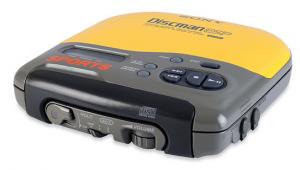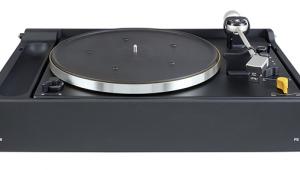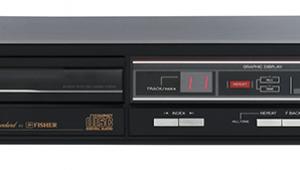KEF Cantor III Loudspeaker

 Sitting bang in the middle of a six-strong range of loudspeakers, the Cantor III was in production from 1983-85. How does this 'compact two-way system' fare today?
Sitting bang in the middle of a six-strong range of loudspeakers, the Cantor III was in production from 1983-85. How does this 'compact two-way system' fare today?
If you were to attend a classic car show and make a beeline for the enthusiasts exhibiting vehicles made by mass-market manufacturers, it would be easy to predict the kinds of designs you'd see on display. Most space would be given over to the noteworthy models: the big-engined ones, the sporty or luxury variants, the rare limited editions. And yet the bread-and-butter models that carried sales reps up and down the land and took many of us to school as children are largely forgotten. They were workhorses, used until the end of their lives and then replaced.
 The satin black MDF baffle is screen
printed with the model name onto an orange/
bronze panel. These colours and texts, in various
forms, were a hallmark of all six C series speakers
The satin black MDF baffle is screen
printed with the model name onto an orange/
bronze panel. These colours and texts, in various
forms, were a hallmark of all six C series speakers
Stepping Up
The same is true when it comes to classic hi-fi. Ask a loudspeaker enthusiast to name some vintage KEF models, and I would expect to hear numbers like '104', '105', various Reference designs and maybe even the 109 Maidstone or the mighty KM1 thrown into the mix. You might get a Coda, too, but that would be due to the sheer ubiquity of that fine budget design rather than outright performance - it's almost the Mini of the speaker world.
The Cantor III here is one of the forgotten heroes from the middle of the C series, not sold in sufficient volume to be a budget classic nor high enough in the pecking order to be a cherished collectable. On that family car hierarchy, it's a 1.6 GL with a four-speed gearbox, AM radio and manual windows. But there's a reason speakers such as these were popular in their day: they offered a definitive increase in performance over the budget favourites. The KEF Cantor III would have marked a grand step indeed on the upgrade ladder for its new owner, and it is fascinating to see how it stacks up today.
The first generation Cantor model saw the light of day around 1971. Larger than the Coda, which was the base model in the C series, it started life as a simple two-way closed-box design, and was essentially a shallower version of the Chorale intended for shelf-mounting where space was limited. Its 10-litre enclosure was half the volume of the Chorale's, but it sported the same driver lineup of B200 (SP1014) bass unit and T27 (SP1032) tweeter.
 A large standmount
loudspeaker, the KEF Cantor
III was one of only two ABR
(reflex-loaded) models in a
range of six otherwise ‘closed
box’ designs in the 1980s
A large standmount
loudspeaker, the KEF Cantor
III was one of only two ABR
(reflex-loaded) models in a
range of six otherwise ‘closed
box’ designs in the 1980s
Made In Japan
This model was phased out in 1978, but the name reappeared for the Cantor II in 1981 and the design was similar. It still used the B200 bass driver (SP1070 type) but in a slightly larger enclosure. However, the tweeter had now been upgraded to the T33 (SP1068) model - a new design that aimed to take the smoothness of the T27 and augment it with improved sensitivity.
The Cantor III arrived in 1983 and by this time had moved up the range a little. Now the third-generation C series had grown to six in number and comprised the Chorale III, Coda III, Cresta III, Cantor III, Carina II and Carlton III. In effect, the Cantor III could be regarded as an improved version of the Chorale III, using the same bass driver and tweeter but now boasting the addition of an Auxiliary Bass Radiator (ABR).
ABRs were a luxury reserved for just two models in the family. While the range-topping Carlton III benefitted from the passive version of KEF's evergreen B139 driver, the Cantor III used a new passive variant of the latest version of its original 200mm bass driver, designated the BD200 (SP1185). This was deployed in conjunction with a 160mm bass driver, the B160 (SP1094), featuring a plastic-coated fibre cone with a convex PVC surround and 25mm dual-layer voice-coil. At the time, the B160 was a brand new design for KEF, seeing first service in the Chorale III, Cresta III and Cantor III.
Treble came courtesy of a new variant of the T33 tweeter (type SP1089). This featured an impregnated textile dome with a 25mm voice coil wound onto a high temperature resin former. The unit was damped with ferrofluid and, intriguingly, the example in our review pair bears a stamp on its magnet that reads 'Japan'.
KEF confirmed to us that a Japanese OEM did manufacture these drive units to its specification during the early production cycle of the Cantor IIIs, and some other models. Build was moved back in-house to the UK once production was established. Sadly, despite the extensive archives lurking deep in KEF's basement, not all of the information from this era has been collated and digitised yet, so the identity of the Japanese OEM currently remains a mystery!
 Functional
4mm speaker
cable binding posts
punctuate the
Cantor III’s ‘industry
standard’ matt black
rear panel
Functional
4mm speaker
cable binding posts
punctuate the
Cantor III’s ‘industry
standard’ matt black
rear panel
Second Bass
The drive units were linked initially by the KEF SP2029 crossover, the same as that used in the smaller Chorale III. However, during production, a new variant of the B160 bass unit was introduced to both the Chorale III and Cantor III, bearing type designation SP1095. As a result, the crossover was also changed to type SP2030A. This new network offered a damped second-order low-pass filter to the bass driver along with a third-order high-pass roll-off for the tweeter.
The Cantor III was housed in a high-density chipboard cabinet of 17 litres in volume, available in a simulated walnut veneer with brown grille. In its literature of the time, KEF modestly promised 'astonishing sound quality and general performance equalled only by expensive systems more than four times larger'.
Detailed specifications were available on the model's original application notes leaflet, including a sketch showing the speaker's vertical reference axis, along with a recommendation that this be directed towards the listener for best performance. KEF also claimed optimum results when the speakers were used with a pair of its own ULS40 stands - a single-pillar design with a trumpet-style base, and very stylish indeed!
The Cantor III and its stablemates were only on sale for around two years until the new C series superseded them in 1985. This also saw KEF change to a simpler numbering system of C10, C20, C30, C40, C60 and C80. Other speakers with full C-based names were phased out as the 1980s progressed, not seeing a return until the mid-1990s, courtesy of the KEF Coda 7.
 The Cantor III’s light textile grille fabric is
stretched over a wooden frame that snaps onto
the baffle via four robust studs. Fixtureless grilles
– employing embedded rare-earth magnets –
were still the stuff of science fiction!
The Cantor III’s light textile grille fabric is
stretched over a wooden frame that snaps onto
the baffle via four robust studs. Fixtureless grilles
– employing embedded rare-earth magnets –
were still the stuff of science fiction!
Adam Listens
The Cantor IIIs were placed on Atacama SL-600 stands and connected to my regular budget set-up of Yamaha A-S500 amplifier and Cambridge Audio Azur 650C CD player . In this company they more than proved their mettle. All too often vintage speakers deliver on the nostalgia but sound a tad 'off the pace' compared with more modern designs. It seems that no-one told the Cantor IIIs about this.
Perhaps most noticeable is the glorious treble performance they offer, that T33 tweeter serving up clarity, sweetness and fine levels of insight without hardness or edge. It really does give the speakers a truly open and airy top end, and means they miss nothing when it comes to high percussion and filigree detail. Cymbals punch through strongly with a delicious metallic ring, while the absence of splashiness is striking. Even more encouragingly, the violins on Pachelbel's Canon, performed by the Academy of Ancient Music and Christopher Hogwood [L'Oiseau-Lyre 410 553-2], sounded rich, detailed and free of any screech.
Also 'un-vintage' was the Cantor III's abilities when it came to imagery and soundstaging. Admittedly, some fine-tuning is essential here, and I found them best when angled so that they pointed directly at my listening seat. Any further apart or inwards tended to soften the treble slightly and cause the central image to collapse somewhat. But when firing directly at you, the stability of the central image is most impressive, even if toe-in is critical here as these loudspeakers do have quite a narrow window of operation.
Class Action
Once setup correctly, however, the vibraphone on 'Paris Skies' from Kate St John's Indescribable Night [All Saints ASCD25] sounded as sparkly and well-defined as I could have hoped for. The way the action shimmied across the soundstage at the beginning of the track was also vivid and easy to follow. These speakers really do offer a truly capacious soundstage that belies their modest dimensions.
It's only at the low end that the Cantor IIIs show their age a little. On the upside, the ABRs make a fine fist of extending their bass extension downward by a promising amount. They have good low-end weight and don't suffer from the wobble and wallow that can be a side effect of a less than well-tuned passive radiator.
Again, there is a degree of tuning available here. KEF originally quoted a 'nominally flat in-room response' to 70Hz when in free space but claimed this could be extended to 60Hz by placing them flat against a wall [see PM's Lab Report, p125].
Lunar Tune
I wouldn't necessarily go this far as they did become a little boomy when located too close to a wall. Doing this also had an adverse effect on the speakers front-to-back soundstaging, flattening the depth perspective. I found that around a foot or so from a rear wall resulted in the best tonal balance in my room.
Positioned in this manner, the bass line on Terry Hall's 'Moon On Your Dress' from his album Home [Anxious Records 4509-97269-2] sounded clear and fruity and there was a lovely punch to the kick drum that really surprised. No, these speakers don't offer the sort of levels of thundering bass that will rearrange the ornaments on your shelves, but they have a feisty authority that is very appealing.
Where they did fall down somewhat was upper bass detail. When a bass line was further back in the mix, it could often sound a little lost. For example, the bass guitar backing Steely Dan's 'Jack Of Speed' [Two Against Nature; Giant 924719-2] is nowhere near as dominant as that of the Terry Hall track and, although it ambled along cheerily enough in the background, the notes lacked the usual form and texture I am used to. If bass lines were rather more subtle, or overly complex, the Cantor IIIs could struggle to keep them properly located in the mix.
That said, the KEF Cantor IIIs generally have a decent realism to their sound. Donald Harrison's soprano saxophone on the track 'Shadowbrook' from his The Power Of Cool album [Castle Communications ESJCD 238] had just the right amount of metallic rasp to sound really believable, and the simpler backing bass and fretless bass lines were well presented. Once again, though, it was the subtle cymbal effects that stood out as a result of the speakers' top end. With material like this, they really shone.
Buying Secondhand
Although the KEF Cantor III is not a common sight when perusing the classic loudspeaker classifieds, you shouldn't have to wait for too long if you find yourself hankering after a pair. And when they do turn up, £200 or so should secure you a set in very good condition.
No Foam
Even better news is that when it comes to common issues with these speakers, there's very little to be concerned about. The surrounds of the bass driver and ABR are made of PVC and rubber respectively, so there is no danger of foam rot. These surrounds can have a tendency to harden with time if the speakers are located in direct sunlight with the grilles removed, but this is a very rare occurrence.
The T33 tweeter is robust, with no history of regular failure. I have heard reports of problems caused by ferrofluid drying out with age but, once again, this is not a common occurrence. KEF used respectable quality capacitors in the crossover and the ones found in our review pair were still well within specification. Capacitor upgrades are therefore unnecessary and will likely just alter the sound of the loudspeakers rather than actually improve their performance.
Hi-Fi News Verdict
Some 40 years ago, the KEF Cantor IIIs were the mid-range filling in a comprehensive series of loudspeakers, but they emerge today as a surprisingly modern-sounding design. With a treble that is beautifully sweet, open and detailed, good bass extension and a fine sense of space and stereo focus, they will fit happily into a vintage or even a modern hi-fi system. Their humble exterior hides a very capable design.


















































